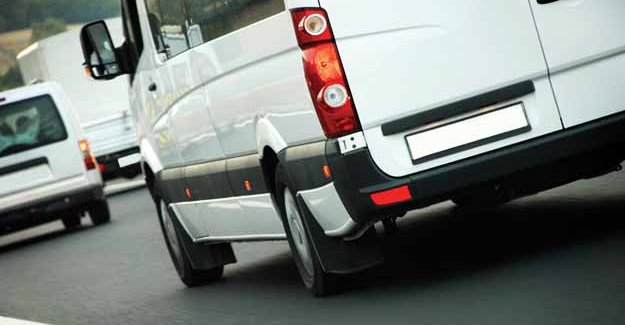White van man delivers the goods
The number of vans on Britain’s roads has been rising more than 2.5 times quicker than cars.
Between 2002 and 2012, the number of vans increased by 29% to 3.3 million.
Over the same period the number of cars rose by 11% to 28.7 million.
Every tenth vehicle on the road is now a light commercial vehicle (LCV).
Over the same decade the number of lorries (heavy goods vehicles or HGVs) on British roads fell by 5% to 460,000.
The highest percentage change in van ownership over that period was seen in the North East, followed by the South West and Wales.
This is the full table:
|
REGION |
Number of vans – 2002 |
Number of vans – 2012 |
% change 2012 on 2002 |
|
North East |
77,300 |
141,000 |
82.5% |
|
South West |
270,100 |
391,100 |
44.8% |
|
Wales |
124,400 |
176,000 |
41.4% |
|
Scotland |
174,600 |
241,500 |
38.3% |
|
South East |
388,700 |
526,400 |
35.4% |
|
Yorks & Humber |
182,000 |
246,000 |
35.2% |
|
East Midlands |
220,600 |
278,000 |
26% |
|
West Midlands |
307,900 |
382,000 |
24.1% |
|
East |
274,000 |
330,300 |
20.6% |
|
London |
194,000 |
203,000 |
4.7% |
|
North West |
282,500 |
294,500 |
4.2% |
|
GREAT BRITAIN |
2,542,300 |
3,280,600 |
29% |
(Source: DfT)
The RAC Foundation commissioned a report from the consultancy company AECOM to try and better understand what has been happening with van traffic. It shows that:
- In Europe only France, Spain and Italy have more vans registered than Britain
- Van traffic in Britain is predicted to almost double by 2040
- 95% of vans are diesel powered
- 20% of vans are either bought or sold each year
- 3% of vans (112,000) are 20 or more years older
- Almost one in two (44%) of UK registered vans visit London each year
Professor Stephen Glaister, director of the RAC Foundation, said:
“The stereotypical white van man comes in for a lot of bad press but the rapidly rising number of light commercial vehicles on our roads suggests a growing army of hardworking sole traders, delivery men and small businesses on whom the economy depends.
“Van travel and ownership has grown significantly in recent years and the government estimates future growth will also be high. Van traffic is set to almost double by 2040, rising twice as fast as traffic overall. The big question is why.
“In 2013 three-quarters of British adults shopped online and we have the highest rate of internet shopping in the EU. Intuitively you would think this has resulted in a big rise in home deliveries and hence van use but so far no one has crunched the numbers.
“There is also reason to believe hauliers are switching away from larger vehicles because of changing delivery patterns and growing environmental restrictions on HGVs. It could also be that more and more people are running their own businesses and need a van to carry their goods and tools.”
ENDS
Contacts:
RAC Foundation:
Philip Gomm – Head of External Communications
[email protected] | 020 7747 3445 | 07711 776448 | 020 7389 0601 (ISDN)
Notes to editors:
The RAC Foundation is a transport policy and research organisation that explores the economic, mobility, safety and environmental issues relating to roads and their users. The Foundation publishes independent and authoritative research with which it promotes informed debate and advocates policy in the interest of the responsible motorist.
The RAC Foundation is a registered charity, number 1002705.
For the purpose of this study, a vehicle is defined as an LCV if it falls within the N1 category, as defined under EU Directive (EC) 2007/46/EC, with a gross weight of 3.5 tonnes or less.



